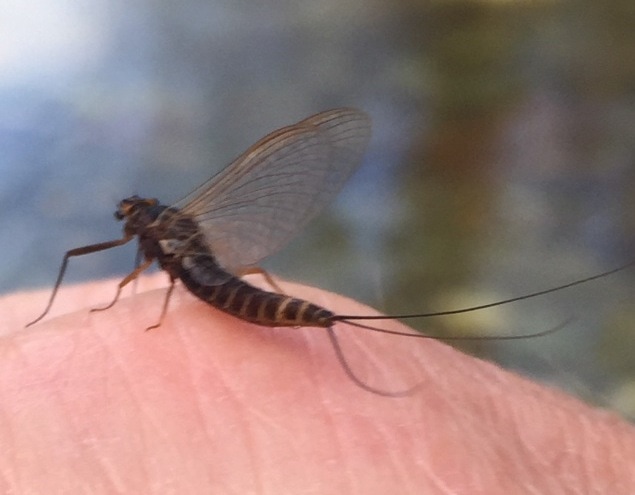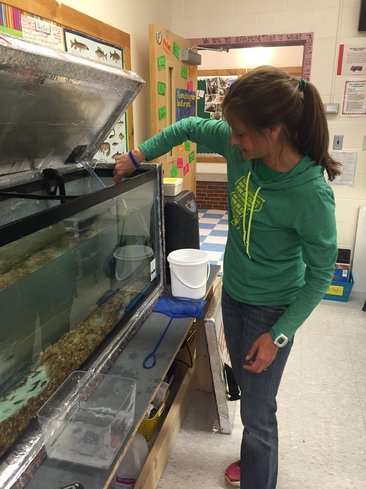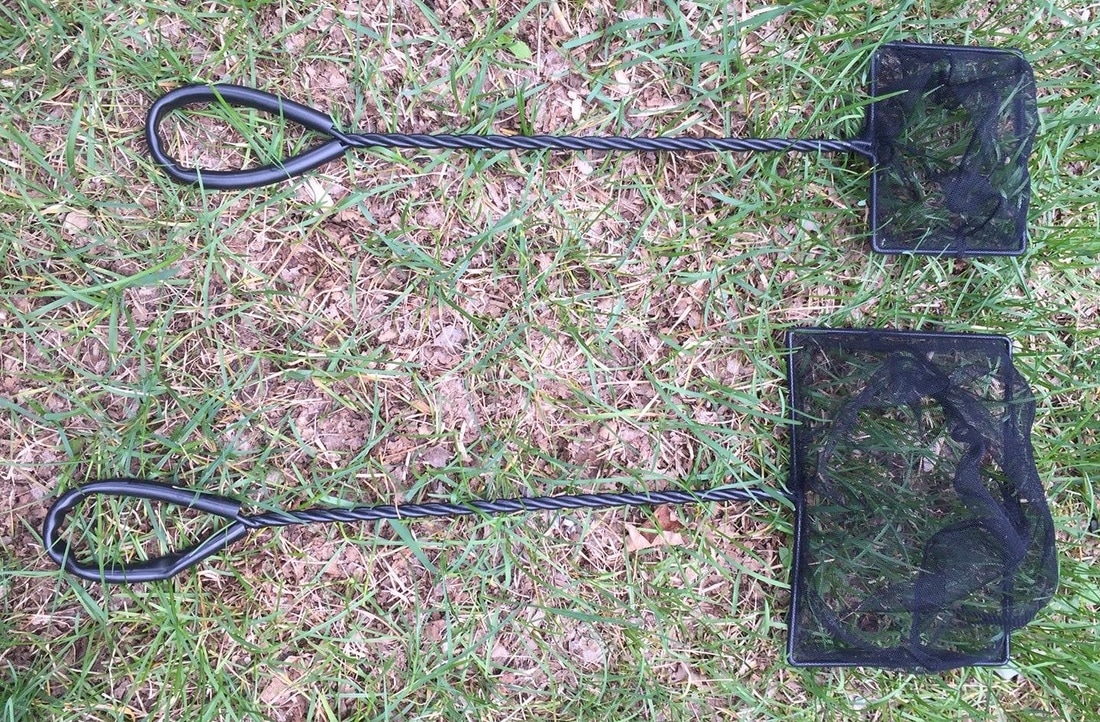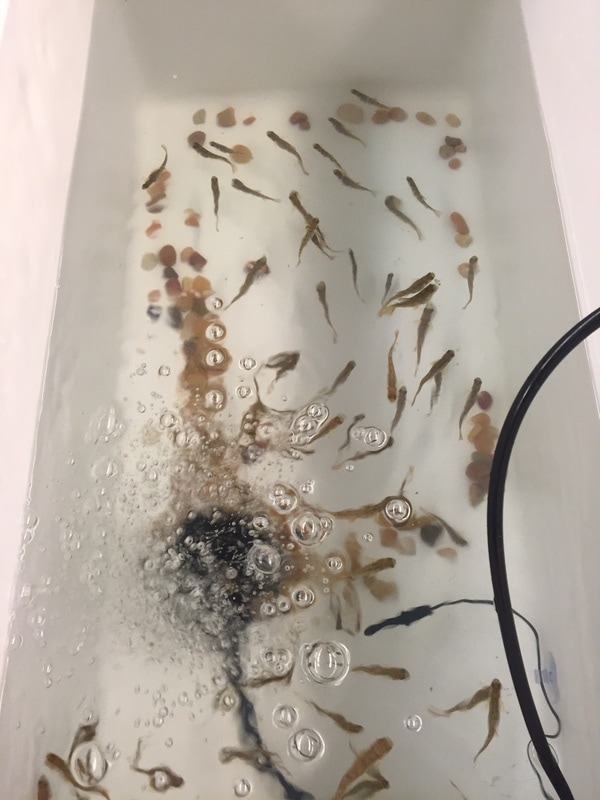|
First trout After publishing blog #21 last Thursday afternoon, I decided to hit one of the local streams for an hour or two of fly fishing. I caught (and released) my first trout of the year: a beautiful nine-inch native brown and a seven-inch brook trout that, by its colors, looked like it may have been stocked. The back of my right hand also served as a landing pad for a virtually black mayfly, which I believe is known as Hexagenia bilineata. See photo below. Here are some artificial flies that are designed to imitate the nymph/larval and adult versions of the March Brown. And when I went to the Castleton River on Friday and threw in my thermometer, I found that the water was 56 degrees. That means that it rose 12 degrees in a week. Pretty amazing! If you can, start taking the temperature of your release stream. Count those fry! In the past, some schools have neglected to count their fish before releasing them. If you don't count them, you will probably never know how many you released. Why is that? Some teachers use what I call the "subtraction method." They make an assumption about how many eggs they started with and then subtract the eggs and fish they know they lost. But this approach, for reasons identified below, is never accurate. Indeed, some teachers I've worked with have discovered that their actual total number of fish is two or more dozen more that they thought they had. Sometimes it's fewer. Here are some explanations.
So, what's the best way to count them? I know at least one teacher who builds counting the fry into the Release Day process. He sets up a recording station staffed by a couple of students. Then each team that has been given fry and released them goes to the recording station to report the number they released. Most teachers, however, count fry as they remove them from the tank and transfer them to whatever container (more on containers later) they are going to use to transport the fry to the stream. Here's what I recommend.
 A whiteboard pressed into service to record the fish total. A whiteboard pressed into service to record the fish total. Dissection at Proctor Elementary School On Friday, Danielle Fagan, at Proctor Elementary School, sent me a report and some photos of a dissection activity conducted by community volunteer Trip Westcott. Here's what Danielle had to say after the activity. Trip, Thanks so much for teaching us about the anatomy of a trout. Everyone--the students, principal, and teachers present--thought it was very cool, especially the stomach contents. Later, we took a closer look at the scales, fin, and eyeball under the microscope. Thanks again, Danielle Danielle sent these photos. As you can see, Danielle used the classroom's digital camera to project onto the screen an image of Trip's dissection work. So how do you transport fish on Release Day? You've been working very hard since January to keep your fish healthy. That has included ensuring the tank water was cool and well aerated. On Release Day you'll have to worry about these issues too. Back on March 13, I wrote a blog post that included a section on adapting a traditional 48-quart picnic cooler so that it is aerated, using an inexpensive battery-powered bubbler, and so that you can easily monitor the temperature of the water. (This also assumed that you froze dechlorinated water in plastic bottles and had them on hand in case you needed to use them to keep the temperature cool.) If you can put together something similar, it will give you lots of options for Release Day scheduling. If you can't, you need to think about how long your fish can manage without aeration. Here's a photo of happy fry in an aerated cooler. Shawn Nailor, TIC liaison for the Mad Dog chapter of Trout Unlimited, wrote me with this question: Hi Joe, Question for you; any idea on how long the fish could stay in water without aeration and chilling? I'm trying to get a sense if a release spot is near a school if just a cooler with water could work for an hour. Shawn I didn't have a good answer for Shawn, so I turned to the person I depend on most in these circumstances. Here is his response. Joe, When I transport fish to a release site, I aerate my cooler because I arrive early to collect the fish and get to the release site before the school buses. Generally when we're ready to start the release of fish I have someone help me carry the cooler to the stream. At that time I remove the aerator. I have never had fish die during the next hour and half to two hours during which kids rotate to the various stations of the release. I keep the cooler in the shade and will add water from the stream to replace that which the kids use up filling their cups. This helps keep the water in the cooler cool and aerated. I carry a battery operated aerator just in case it is a very warm day and feel the fish need the extra O2. I have probably used it once or twice. I think Shawn should be OK if he adds some stream water to the cooler as the release progresses. Chuck Dinkel, MD TIC Coordinator Here are two more ideas:
What temperatures are the streams? Earlier in this post I mentioned that the Castleton River was all the way up to 56 degrees. Well, not all streams are that warm. On Monday I spent an hour fishing Mad Tom Brook, which drains Bromley Mountain and hits Batten Kill in the town of East Dorset. On a beautiful, sunny day (as you can see from the photo), MTB was 50 degrees. This means that you can't rely on my reports of stream conditions, especially if you live and work in a fairly different part of the state. Instead, it would be best if, within four or five days of your release date, you could plunk a thermometer into your stream (or an appropriate local surrogate) and take its temp.
These next few weeks will be very busy! Have a great Release Day!
1 Comment
Trip Westcott
5/3/2017 07:13:26 pm
Hi Joe et al, For 25 years I used this method at release. Visit the stream a few days or week before release. Take the temp then compare it to a nearby stream. Note the difference . Use this as a guide. The difference will be the same. Change temps in tank to match [gradually] Net the fish into a cooler. Have a kid constantly pour water with a solo cup from a 2ft height to make bubbles all through transport. Mix and match water at streamside , give each kid a white paper cup with 2 to 4 netted fish to release. With a clip board keep a count. I never lost one salmon fry using this method. Trip Westcott
Reply
Leave a Reply. |
Joe Mark, Lead Facilitator, Vermont Trout in the Classroom
In June 2012, I retired after 40 years in higher education, having spent the last 32 years of my career as dean at Castleton. One of the first things I volunteered to do in retirement was to work with Jim Mirenda to help the Dorset School, where his kids and my Vermont grandkids attend, start a TIC program. Gradually that commitment grew into my current role, which is both demanding and highly rewarding. Archives
June 2017
Categories |






 RSS Feed
RSS Feed
